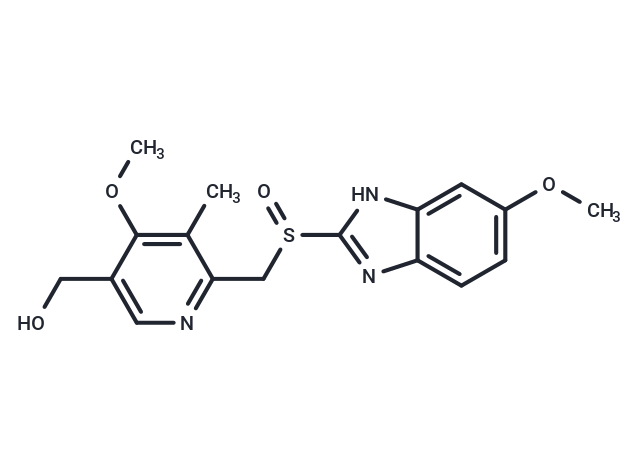Shopping Cart
Remove All Your shopping cart is currently empty
Your shopping cart is currently empty
5-hydroxy Omeprazole is a major metabolite of omeprazole , an inhibitor of the gastric H+/K+-ATPase pump.[1] 5-hydroxy Omeprazole is produced from omeprazole by the action of cytochrome P450 (CYP) isoform 2C19, a monooxygenase. [2][3] CYP2C19 polymorphisms significantly influence the metabolism of omeprazole, and individuals may be classified as homozygous extensive metabolizers, heterozygous extensive metabolizers, and poor metabolizers.[1]

| Pack Size | Price | USA Warehouse | Global Warehouse | Quantity |
|---|---|---|---|---|
| 500 μg | $763 | 35 days | 35 days | |
| 1 mg | $1,210 | 35 days | 35 days |
| Description | 5-hydroxy Omeprazole is a major metabolite of omeprazole , an inhibitor of the gastric H+/K+-ATPase pump.[1] 5-hydroxy Omeprazole is produced from omeprazole by the action of cytochrome P450 (CYP) isoform 2C19, a monooxygenase. [2][3] CYP2C19 polymorphisms significantly influence the metabolism of omeprazole, and individuals may be classified as homozygous extensive metabolizers, heterozygous extensive metabolizers, and poor metabolizers.[1] |
| Molecular Weight | 361.42 |
| Formula | C17H19N3O4S |
| Cas No. | 92340-57-3 |
| Smiles | COc1ccc2nc([nH]c2c1)S(=O)Cc1ncc(CO)c(OC)c1C |
| Storage | Powder: -20°C for 3 years | In solvent: -80°C for 1 year | Shipping with blue ice/Shipping at ambient temperature. | ||||||||||||||||||||||||||||||||||||||||
| Solubility Information | Ethanol: 2 mg/mL (5.53 mM), Sonication is recommended. DMF: 20 mg/mL (55.34 mM), Sonication is recommended. DMSO: 10 mg/mL (27.67 mM), Sonication is recommended. | ||||||||||||||||||||||||||||||||||||||||
Solution Preparation Table | |||||||||||||||||||||||||||||||||||||||||
Ethanol/DMSO/DMF
DMSO/DMF
DMF
| |||||||||||||||||||||||||||||||||||||||||
| Size | Quantity | Unit Price | Amount | Operation |
|---|

Copyright © 2015-2026 TargetMol Chemicals Inc. All Rights Reserved.